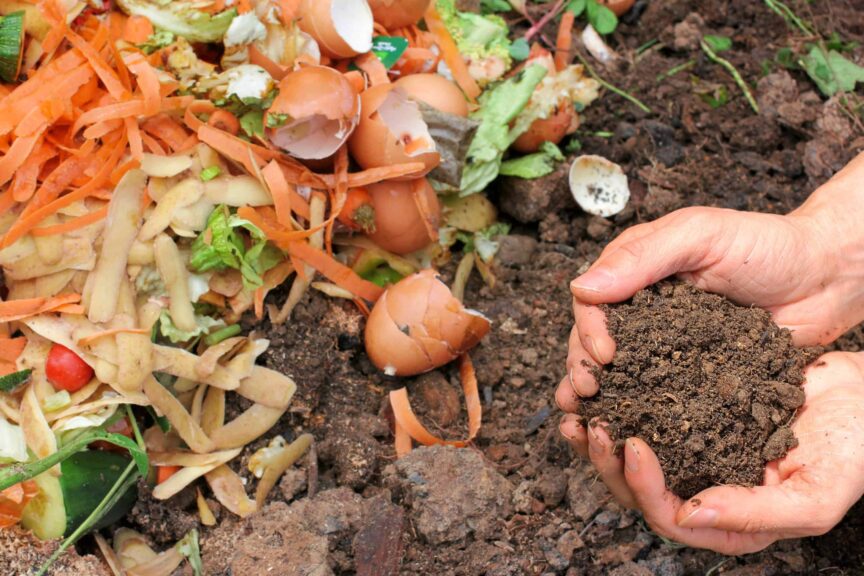Organic Matter is Magic
Amending your soil is a topic that many people find quite intimidating. The idea of soil tests and soil analysis to get started just sounds like it’s something too difficult to do, so a lot of people don’t even try to compost. While some soils would certainly benefit from an in-depth analysis, the truth is you can make any soil better by simply adding organic matter.
Why Compost? Because it’s free – it’s the best food for your soil and it’s good for the environment.
Compost should be light and airy, almost crumbly. It’s a natural resource with minerals and micronutrients that are active and an important lifeline for all plants. It also helps keep the ph level of the soil neutral and retains moisture and much needed oxygen. Composting also improves drainage.
There can be 2 different types of composting materials.
Browns: autumn leaves, wood chips, straw, paper, coffee filters, etc.
Greens: grass clippings, vegetable scraps, egg shells.
These are things which should NOT be included in your compost pile.
*pet litter, diapers, weeds (as you will just end up with more weeds, especially if they are in seed), diseased plants (a definite No No), meat, fish & bones (these will attract unwanted insects and/or pests and wildlife), fats, oils, dairy products and treated wood. (these take too long to break down)
Here is a basic formula for starting a compost pile:
*start your compost pile on soil or ground – not on a concrete slab. It doesn’t need to be any larger than 3’x3’x3’ high.
*bottom – sticks/twigs to provide aeration (air movement through the pile) Warm air from the bottom helps compost the added materials.
*the compost pile should be open to the elements but make sure there is good drainage and not in an area that gets strong winds or hot sun all day. Start with about 2 inches of soil, then your twigs and branches for air movement.
*add some ‘browns’ and ‘greens’ then another layer of soil – repeat the layering over time, while also ‘turning over’ the pile on occasion. As you gradually add plant material to your bin the older material will start to decompose. It is best to turn your compost pile every few weeks, although less often will still get the job done. Turning a compost pile is exactly what it sounds like. You turn the material over to mix the top material under to allow it to decompose faster.
*you can add in some kitchen scraps, manure, blood or bone meal or a commercial fertilizer (10/10/10) which will help accelerate the process.
*the smaller the pieces you add, then the faster the composting process will be.
A few problems to watch for:
1. Unpleasant ammonia smell
– This means there is either not enough air getting through the pile or there is too much water. You can use a pitch fork to move the pile and try and get some air moving through the branches for better circulation. If the pile is too damp, add some compost product to absorb the extra water.
2. If there is a damp or sweet smell
– This means there is a lack of nitrogen and the pile is not getting enough air. Turn the layers for aeration and add in some fertilizer. Or, this could mean your pile is ready to use!
3. Bugs or insects
– Means they are doing their job
– You can bury the food scraps deeper and add more soil to keep the pests deeper under the soil.
Summary:
By using compost you return organic matter and nutrients to the soil in a form readily useable to plants. Organic matter improves plant growth by helping to break heavy clay soils into a better texture, by adding water and nutrient-holding capacity to sandy soils, and by adding essential nutrients to any soil.
Have some fun with composting! It’s worth trying it. Your plants will thank you!

